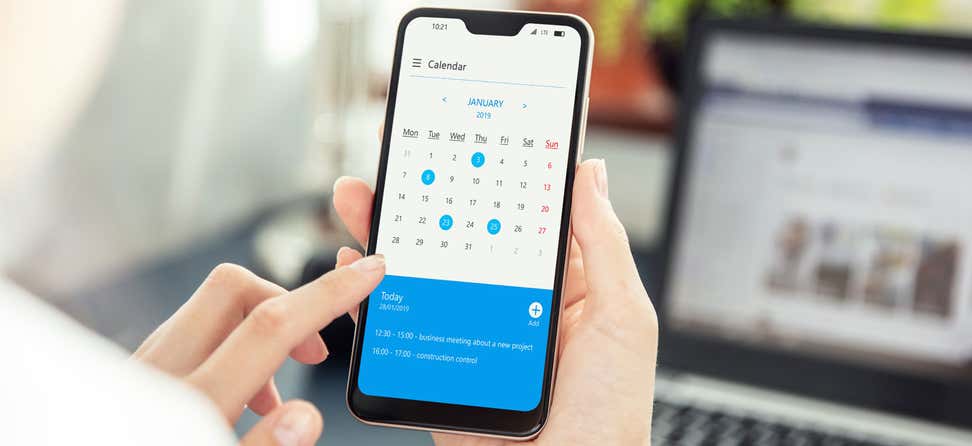Key Takeaways
A new regulation published in September 2023 means low-income Medicare beneficiaries may be eligible to get help covering some or all of their Parts A and B out-of-pocket costs.
Medicare Savings Programs (MSPs) are a set of benefits administered by state Medicaid agencies and help people pay for their Medicare costs.
The new regulation reduces red tape to make it easier to afford and access health care via MSPs.
More low-income Medicare beneficiaries will no longer have to pay out-of-pocket for their Part A—when applicable—and Part B premiums, according to a new regulation that will become effective between October 2024 and April 2026.
The new regulation will help an estimated 860,000 more older adults and people with disabilities. The new rule requires states to make better use of federal data sources to streamline enrollment into state Medicare Savings Programs (MSPs). The Centers for Medicare & Medicaid Services (CMS) published the “Streamlining” final rule on Sept. 21, 2023, which will make it easier for individuals to sign up for and remain enrolled in MSPs.
NCOA applauds CMS for its leadership, and we look forward to the rule’s enforcement.
What are Medicare Savings Programs (MSPs)?
MSPs free up money away from certain out-of-pocket costs toward other costs of living. The four types of MSPs vary in that some cover more cost sharing than others. The Qualified Medicare Beneficiary (QMB) Program, for instance, is the most generous and is available to Medicare beneficiaries of the least means. Individuals, depending on their incomes and assets, may also qualify for less generous programs.
Across all MSPs, a large number of low-income MSP beneficiaries (around 10 million people on Medicare per month) currently get help with their Part B premiums. A smaller population of current MSP beneficiaries (around 700,000 people a month) get help with their Part A premiums; these premiums apply to people who have not worked long enough to qualify for premium-free Part A
NCOA estimates that 10.2 million individuals were enrolled in MSP in 2019. Yet a 2017 study using 2010 data estimated that around half of eligible MSP enrollees were not enrolled. Various federal and state enrollment policies have, unfortunately, acted as barriers to enrolling qualifying low-income Medicare beneficiaries in programs that could make a noticeable and positive impact on their finances.
The current underutilization of MSPs is driven by a few administrative factors. Some states either:
- Do not follow laws and regulations requiring them to process certain Social Security-provided data to enroll people in MSPs; or
- Have complicated layers of rules or red tape impeding access to the subsidies.
This new CMS final rule will simplify various, cumbersome application and verification processes that hinder enrollment.
In comments to CMS in November 2022, NCOA gave strong support to the earlier, proposed version of the rule that came out in September 2022. In August 2023, NCOA wrote a letter—signed on to by nine of our beneficiary advocacy partner organizations—to the White House Domestic Policy Council asking it to prioritize publishing the final “Streamlining” rule.
How will the new regulation ensure states are processing data to enroll people into MSP?
Beginning on April 1, 2026, the new rule will require states to use existing data provided to them by the Social Security Administration. (SSA) The new rule ensures that states leverage so-called “leads data” from federal sources concerning whether the beneficiary is enrolled in a related program known as the Part D Extra Help program. CMS, for instance, provides clear instructions for states to process Extra Help enrollment data and use it to assess eligibility for MSPs.
Using the leads data, the state would first determine if the leads data set contains enough information for the state to determine MSP eligibility. If the state requires additional information from the enrollee, they must notify the enrollee of potential cost-sharing savings through the MSPs, but indicate that more information is needed from the beneficiary to make an eligibility determination. The individual would then have 30 days to complete the information request, and then the state would verify eligibility. At a minimum, the state must collect enrollee information on citizenship/immigration status.
Currently in 2023, 34 states use Social Security’s Supplemental Security Income (SSI) data to nearly complete enrollment in MSP, and 16 states (knowns as "SSI criteria/209(b) states") require the qualifying individual to take extra steps such as providing additional information. Under the new rule, all states will have to begin enrollment once they receive the Part D Extra Help program data. Because Extra Help covers a similar population, CMS believes enrollment in Extra Help will be enough to start enrolling the qualifying beneficiary into MSP.
In the final rule, CMS recognizes the difficultly of implementing the provisions during the Medicaid unwinding as well as states' comments about needing significant technical assistance to process leads data.
Given these comments, CMS moved the implementation date of these provisions to April 1, 2026. NCOA hopes that states able to implement this requirement earlier than April 2026 will do so to assist people eligible for assistance with Medicare Parts A and B cost sharing. Given the large number of Medicare-eligible individuals terminated from Medicaid in 2023, it is critical states take this step.
How will the new regulation make MSP enrollment easier?
The final rule newly requires that by April 1, 2026, states accept at face value MSP enrollee reporting of certain resources and incomes. These new requirements would apply—“unless the State has information that is not reasonably compatible with the applicant's attestation”—to life insurance policies, burial funds for the enrollee and their spouse, and dividend and interest income.
Since 10 states and the District of Columbia do not have MSP/Medicaid asset tests and/or do not require documentation to complete eligibility redeterminations, the new requirement would make it easier for estimated 8.4 million people to complete their MSP enrollment. We also feel this administrative simplification will reduce MSP churn, where people move in and out of the program depending on their ability to provide documentation rather than actually being ineligible.
The final rule will reduce documentation burdens for states and individuals. Under the new rule, states are allowed to request additional information from the individual to complete MSP enrollment. The SSI criteria/209(b) states requiring the beneficiary to provide additional information will have to start the MSP application, but can request information from the enrollee around such things as their income and assets. The enrollee will have 30 days to return this information.
In 2023, individuals living in SSI criteria/209(b) states might not complete this last step to finalize their enrollment because:
- The state, for instance, does not provide them with enough time to gather income- and asset-related information the application requires;
- The mailed application is not opened; or
- The individual has moved.
First, the new rule puts more time on the clock. Beginning in April 2026, states choosing to conduct post-enrollment eligibility verification checks will need to provide the enrollee with 90 calendar days to respond to requests for information.
SSI criteria/209(b) states, having received mail returned from qualifying beneficiaries, may then conclude that the individual cannot be located and then terminate MSP eligibility. The new rule, for example, requires that states check various databases to see if updated contact information can be found and that the state conduct additional outreach to the beneficiary using different modalities such as traditional mail, telephone, etc.
Also, the final rule recommends that requests for information should include SHIP contact information so beneficiaries can easily reference the Medicare assistance service’s contact information. And the rule recommends that when requests for information are sent out, the state should consider using information on file to fill out parts of the form. NCOA feels that pre-populating information from other databases into enrollee forms can help people respond more quickly to requests for information.
How will the new regulation make MSP enrollment easier for people already enrolled in the Supplemental Security Income (SSI) program?
The SSI program provides a limited amount of financial assistance to people with disabilities as well as to low-income older adults. The SSI population is more likely to have fewer sources of income and assets than the population of people receiving MSP or Part D Extra Help. The Medicare-eligible SSI enrollee is most likely eligible for QMB yet may not be automatically enrolled due to red tape, especially in SSI criteria/209(b) states.
CMS believes a major driver for low enrollment in QMB is that SSI criteria/209(b) states require SSI recipients to take extra steps and provide additional information to enroll. CMS says 500,000 SSI recipients (16%) were in 2022 eligible for, but not enrolled in, QMB. By October 2024, the SSI criteria/209(b) states will have a much more simplified path for enrolling SSI beneficiaries in QMB.
The following will apply to most SSI beneficiaries eligible for Medicare: once the SSI beneficiary enrolls in Medicare Part B, the SSI criteria/209(b) state will then pay the individual’s Part B premium. Next, the state will enroll the individual into QMB.
As noted above, there are some exceptions to how this will work. In 14 and soon to be 13 states, this process will continue to not run as smoothly for individuals eligible for premium-Part A because of state red rape. These so-called “group payer” states have rules around when qualifying individuals can enroll in premium-Part A and Part B Medicare. In group payer states, the SSI beneficiary eligible for premium-Part A Medicare can only enroll in premium-Part A during the first three months of the calendar year; this period is referred to as the General Enrollment Period (GEP). The premium-Part A population includes recent immigrants, non-salaried freelance or gig workers, or family caregivers.
In the final rule, CMS codifies a decades-old practice of reimbursing states that pay the first month’s Part A premium. Since QMB enrollment cannot occur until the first Part A premium has been paid, this change provides welcome clarity. As a result of the final rule, CMS gives states the option for QMB coverage to begin the same month premium-Part A entitlement begins. CMS lists Oct. 1, 2024 as its compliance date.









